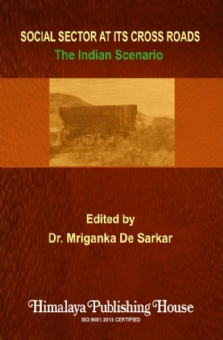Social sector refers to all those sectors that are essential for improving the quality of life of the people.
It includes not only sectors like education, health and nutrition, but also those sectors that are concerned with eradication of poverty and other programmes of social welfare. In a broader sense, the issues related to gender discrimination, environmental degradation, etc. also come under the purview of social sector development.
Social sector is an important sector for India’s economy and includes several important components such as education, health and medical care, water supply and sanitation, poverty alleviation, housing conditions, etc. that play a vital contribution in human development. Social sector may also refer to the value system of an economy which fosters values. Due to the rapidly globalizing competitive marketplace coupled with the increasing need to expand quality of life at the grassroots level and to spur innovative thought, policy makers in India are slowly but surely setting the social sector on the reform track.
India has made much progress along several dimensions of social sector since independence. The average life expectancy at birth has increased by 13 years, and the infant mortality rate has fallen by half. However, despite these considerable achievements, adult literacy rates remain low, maternal mortality rates remain high and almost half of all children under age three years are undernourished.
Many schools and health centers are underfunded and underequipped, and both the education and health sectors are in need of reforms. Through seventy years into life of free India, social justice still remains an unrealized dream for millions of homes.
A vast range of issues has been debated and discussed in India in the context of the social sector during the last decades, including the right to education, land rights, food security, health for all, gender equality, women empowerment, livelihood and employment guarantee. Successive governments have also tried to promote the idea of sustainable and equitable economic growth and development but the reality is that high levels of both economic and social disparities continue to exist. Contemporary political discourse contains recurring references to increasing inequality in society in both developed and developing nations.
Against this background, it was felt that the character and contour of such an approach for development in social sector thus needed debate and discussion. It is in this context, this book is a humble attempt to look into these issues in social sector of India to arrive at a consensus on challenges to be addressed in social sector.
In this connection, the present volume brings together research papers on different social issues such as linkages between income redistribution of poor and inflation, factors influencing the primary healthcare facility system, inclusive growth and rural employment, wellbeing of elderly women, farmers’ awareness about the crop insurance scheme, socio-economic factors and child mortality in Eastern and North Eastern States, child malnutrition, caste based exclusion, problems of credence goods, etc.
Contents –
1. MGNREGA and Inflation: Through the Lens of Wage and Productivity – Prof. Chandrakanta Saha
2. Factors Influencing the Primary Healthcare Facility System: A Case Study on Khargram Block, Murshidabad, West Bengal – Prof. Debaprasad Sarkar and Sanchita Roy
3. Role of Banks in Financial Inclusion: Experiences of India with Special Reference to PMJDY – Prof. Manas Roy
4. An Anecdote of Credence Goods – Prof. Parag Chandra and Prof. Mriganka De Sarkar
5. Health and Well-being of the Elderly Women: A Survival Challenge in Old-age Home in West Bengal – Prof. Pratima Kirtonia and Prof. Debaprasad Sarkar
6. Farmers’ Perception and Awareness about Crop Insurance Programme – A Village Level Survey in North 24 Parganas District of West Bengal – Prof. Rupam Mukherjee
7. Socio-economic Factors, Health Inputs and Child Mortality in Eastern and North-Eastern States of India – Prof. Saswati Chaudhuri and Pooja Dey
8. Determinants of Child Malnutrition in India – Prof. Smritikana Ghosh
9. Caste, Culture and Exclusion in India: A Study through Bioinformatics and Constrained Optimization – Prof. Soumya Sengupta and Prof. Sugata Sen







